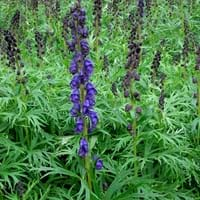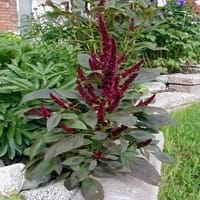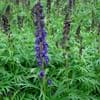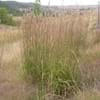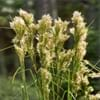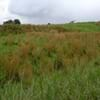Life Span
Perennial
Annual
Type
Flowering Plants, Perennial
Ornamental Plants
Origin
Not Available
Central America
Types
Yellow Monkshood, Carmichael's Monkshood, Kamchatka Aconite
Not Available
Habitat
low mountains
Cultivated Beds
USDA Hardiness Zone
4-8
3-10
AHS Heat Zone
Not Available
-9999
Sunset Zone
Not Available
21,22
Habit
Upright/Erect
Arching/Fountain-shaped
Flower Color
Blue, Violet
Red, Green, Purple, Dark Red
Flower Color Modifier
Not Available
Bicolor
Fruit Color
Non Fruiting Plant
Brown, Ivory, Pink, White
Leaf Color in Spring
Green
Red, Green, Purple
Leaf Color in Summer
Green
Light Green
Leaf Color in Fall
Green
Several shades of Green
Leaf Color in Winter
Green
Light Green
Plant Season
Fall, Summer
Spring, Summer, Fall
Sunlight
Full Sun, Partial shade
Full Sun
Type of Soil
Moist
Loam, Sand
The pH of Soil
Not Available
Acidic, Neutral, Alkaline
Soil Drainage
Well drained
Average
Bloom Time
Early Fall, Late Summer
Summer, Late Summer, Early Fall, Fall
Repeat Bloomer
Yes
Insignificant
Tolerances
Not Available
Drought
Where to Plant?
Ground
Ground, Pot
How to Plant?
Divison
Seedlings, Stem Planting
Plant Maintenance
Medium
Medium
Watering Requirements
Do Not over Water, Requires regular watering
Average Water Needs
In Summer
Lots of watering
Lots of watering
In Spring
Moderate
Moderate
In Winter
Average Water
Average Water
Soil pH
Neutral
Acidic, Alkaline, Neutral
Soil Type
Average, Moist
Loam, Sand
Soil Drainage Capacity
Well drained
Well drained
Sun Exposure
Partial Sun
Full Sun
Pruning
Remove damaged leaves
Remove damaged leaves, Remove dead branches, Remove dead leaves
Fertilizers
All-Purpose Liquid Fertilizer
Inorganic
Pests and Diseases
Citrus leaf miner, Leaf spot, Mealy bugs, Mites, Rust, Verticillium Wilt
Aphids, Viruses
Plant Tolerance
Drought
Drought
Flower Petal Number
Not Available
Single
Edible Fruit
No
Insignificant
Fragrant Bark/Stem
No
Yes
Foliage Texture
Bold
Coarse
Foliage Sheen
Matte
Glossy
Self-Sowing
Yes
Not Available
Allergy
breathing problems, Nausea, Rapid Heartbeat, Sweating, Vomiting, weakness
no allergic reactions
Aesthetic Uses
Showy Purposes
Beautification, Borders
Beauty Benefits
Not Available
Good for skin and hair
Environmental Uses
Not Available
Air purification
Medicinal Uses
Gout, Heart problems, Inflammation, Joint pain, Kidney problems, Nerve pain, Wounds
Antidiarrhoeal, Astringent
Part of Plant Used
Whole plant
Leaves, Seeds
Other Uses
Used in herbal medicines
Used as colouring in foods, Used As Food, Used to make yellow and green dye
Used As Indoor Plant
No
No
Used As Outdoor Plant
Yes
Yes
Garden Design
Cutflower, Mixed Border
Cottage garden, Flower borders, Informal Garden
Botanical Name
Aconitum variegatum
AMARANTHUS hypochondriacus
Common Name
Aconite, Monkshood, Wolf's bane, Leopard's bane, Mousebane, Women's bane, Devil's helmet, Queen of all Poisons, or Blue rocket
Prince's Feather, Prince-of-Wales-Feather
In Hindi
बच्छनाभ
Silver Clary
In German
Eisenhut
Silber Clary
In French
aconit
Argent Clary
In Spanish
acónito
Clary plata
In Greek
monkshood
ασημένιο Clary
In Portuguese
Aconitum
prata Clary
In Polish
tojad
Srebrny Clary
In Latin
aconitum
Argentum Clary
Phylum
Magnoliophyta
Magnoliophyta
Class
Magnoliopsida
Magnoliopsida
Order
Ranunculales
Caryophyllales
Family
Ranunculaceae
Amaranthaceae
Genus
Aconitum
Amaranthus L
Clade
Angiosperms, Eudicots
Angiosperms, Core eudicots, Eudicots
Tribe
Delphinieae
Not Available
Subfamily
Not Available
Amaranthoideae
Number of Species
Not Available
Properties of Aconitum and Silver Clary
Wondering what are the properties of Aconitum and Silver Clary? We provide you with everything About Aconitum and Silver Clary. Aconitum doesn't have thorns and Silver Clary doesn't have thorns. Also Aconitum does not have fragrant flowers. Aconitum has allergic reactions like breathing problems, Nausea, Rapid Heartbeat, Sweating, Vomiting and weakness and Silver Clary has allergic reactions like breathing problems, Nausea, Rapid Heartbeat, Sweating, Vomiting and weakness. Compare all the properties and characteristics of these two plants. Find out which of these plant can be used as indoor plant. If you are interested to decorate your house and garden, find out aesthetic uses, compare them and select the plant which will beautify your surrounding. Along with beautification, try comparing medicinal and edible uses of Aconitum and Silver Clary and you can choose the plant having best and most benefits.
Season and Care of Aconitum and Silver Clary
Season and care of Aconitum and Silver Clary is important to know. While considering everything about Aconitum and Silver Clary Care, growing season is an essential factor. Aconitum season is Fall and Summer and Silver Clary season is Fall and Summer. The type of soil for Aconitum is Moist and for Silver Clary is Loam, Sand while the PH of soil for Aconitum is Not Available and for Silver Clary is Acidic, Neutral, Alkaline.
Aconitum and Silver Clary Physical Information
Aconitum and Silver Clary physical information is very important for comparison. Aconitum height is 130.00 cm and width 80.00 cm whereas Silver Clary height is 111.75 cm and width 0.75 cm. The color specification of Aconitum and Silver Clary are as follows:
Aconitum flower color: Blue and Violet
Aconitum leaf color: Green
Silver Clary flower color: Red, Green, Purple and Dark Red
- Silver Clary leaf color: Red, Green, Purple
Care of Aconitum and Silver Clary
Care of Aconitum and Silver Clary include pruning, fertilizers, watering etc. Aconitum pruning is done Remove damaged leaves and Silver Clary pruning is done Remove damaged leaves, Remove dead branches and Remove dead leaves. In summer Aconitum needs Lots of watering and in winter, it needs Average Water. Whereas, in summer Silver Clary needs Lots of watering and in winter, it needs Average Water.
